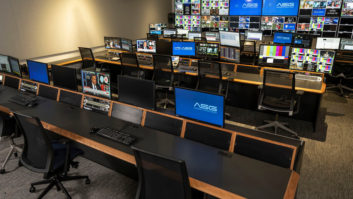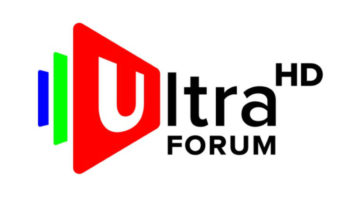The International Consumer Electronics Show (CES) which rolls into Las Vegas every January bills itself as the world’s largest technology tradeshow, and looking at the figures it’s probably got a point, writes Andy Stout.
With 150,000 attendees it’s 50% bigger again than NAB, and has even recently seen itself expanding into the purgatory that is the Sands Center. Despite its focus on the consumer market and a pronounced thing for Lego robots, it’s also rapidly becoming the show whose announcements set much of the agenda for the forthcoming year.
The format war between HD-DVD and Blu-ray is a case in point. A raft of new Blu-ray players were announced at the show, with Samsung promising to ship the first commercially available units in April and machines from Sony, Philips, Pioneer, Panasonic and LG slated to follow later in the year. Given that the Blu-ray Disc Association only announced the specification was complete on 6 January, however, many wonder if the timing is realistic.
The HD-DVD camp hit back with Toshiba announcing the HD-A1 would ship at a very consumer-friendly $499 in March (after slipping from an initial Q4 2005 date). The format got a further boost too with Microsoft announcing it would release an external HD-DVD drive for its new Xbox 360 games console, which seemed all the more significant in the face of a lack of any substantial news on the ETA of Sony’s Blu-ray based PlayStation3. Speculation of a Xmas 2006 launch for HD-DVD in Europe remains strong.
Microsoft’s Gates also gave the opening keynote speech of this year’s show, and emphasised the importance of IPTV throughout 2006 by announcing a hook up with BSkyB. The service, Sky by broadband which launched a couple of days later, uses Microsoft DRM technology and allows Sky subscribers to download content and watch it using the Windows Media Viewer. Google meanwhile announced plans for its own video on demand service, which launches with content from CBS, ITN and others, while Yahoo unveiled Yahoo Go. Perhaps more interestingly Google Video keeps some of the web’s open-source roots alive by allowing any content provider to upload their content and distribute it either for free or at a user-definable price.
Video to mobile inevitably features strongly in all three organisations plans, and it is no wonder seeing some of the new phone tech around. Pick of the bunch from a broadcast perspective was probably the Samsung SGH-ZX20, an HSDPA, 3.5G-boosted unit capable of hitting 3.6Mbps data speeds. Networks willing, it should be out and about in Europe later in the year.
At the other end of the spectrum, HD’s inexorable rise continued, with the US Consumer Electronics Association forecasting HDTV sets will outsell their analogue counterparts by 89% in 2006 and reach an installed base of just under 16m. Judging by the wares on show, 1280 x 720 sets are well on the way to becoming a thing of the past.
Whither Apple in all this? The company historically avoids CES, preferring to preach to the already converted at its own Macworld show the week after. This year it promised a wholesale transition to Intel chips by the end of 2006, with a two to four times speed bump as a result. Strong rumour also has the company unveiling Final Cut Pro 6 at NAB, as well as a new high-end package, Final Cut Extreme, that can take full advantage of the new Intel-powered Mac’s power.





